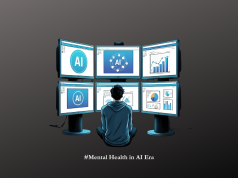As our veterans trade in their uniforms for business suits and integrate into various sectors of the civilian workforce, they bring with them a wealth of experience, discipline, and unique skills. However, the transition from active duty to a traditional work environment is fraught with invisible battles that many veterans continue to fight silently. This is the story of a frontline that goes unnoticed—the frontline of mental health among our nation’s veterans in the workplace.
The numbers paint an alarming picture. According to a report by the Substance Abuse and Mental Health Services Administration (SAMHSA), nearly one in four veterans showed signs of a mental health disorder or cognitive impairment. Post-traumatic stress disorder (PTSD) and depression are the most prevalent mental health challenges faced by returning service members, with the Department of Veterans Affairs estimating about 31 percent of Vietnam veterans, 10 percent of Gulf War veterans, and 11 percent of veterans of the war in Afghanistan have experienced PTSD in their lifetime.
Yet, despite these statistics, there remains a pervasive stigma around mental health in the veteran community—a stigma compounded by the often stoic and self-reliant warrior ethos. This can lead to underreporting of issues and an aversion to seeking help, leaving many veterans suffering in silence.
The transition to civilian life, with its inherent changes in structure, community, and purpose, can further exacerbate mental health problems for veterans. The workforce is not always equipped to understand or respond to the unique challenges veterans face. This places the onus on employers to create a supportive and accommodating environment, but how?
Some companies are pioneering the way with innovative wellness programs tailored for veteran employees. These initiatives recognize the specific needs of veterans and often include access to counseling services, peer support groups, and training for management to better understand and assist with military-related mental health issues.
The benefits of such programs are far-reaching. They not only provide a lifeline to veterans grappling with mental health challenges but also foster an inclusive culture that values the contributions and wellbeing of all employees. When veterans feel supported, they are more likely to be engaged and productive members of their teams, which in turn drives overall workplace productivity and cohesion.
The invisible frontline is not just a veterans’ issue; it is a workplace issue, a societal issue. Ignoring it is a disservice to the men and women who have served our country and to the potential of our workforce. It’s time we pay attention and take action. Our blog seeks to provoke a much-needed dialogue on how we, as employers, colleagues, and healthcare providers, can better support the mental wellness of veterans in the civilian workforce. It’s time to bring the invisible frontline into the spotlight and give our nation’s heroes the support and recognition they deserve.
To our veterans, we see you, we thank you, and we stand with you.




























